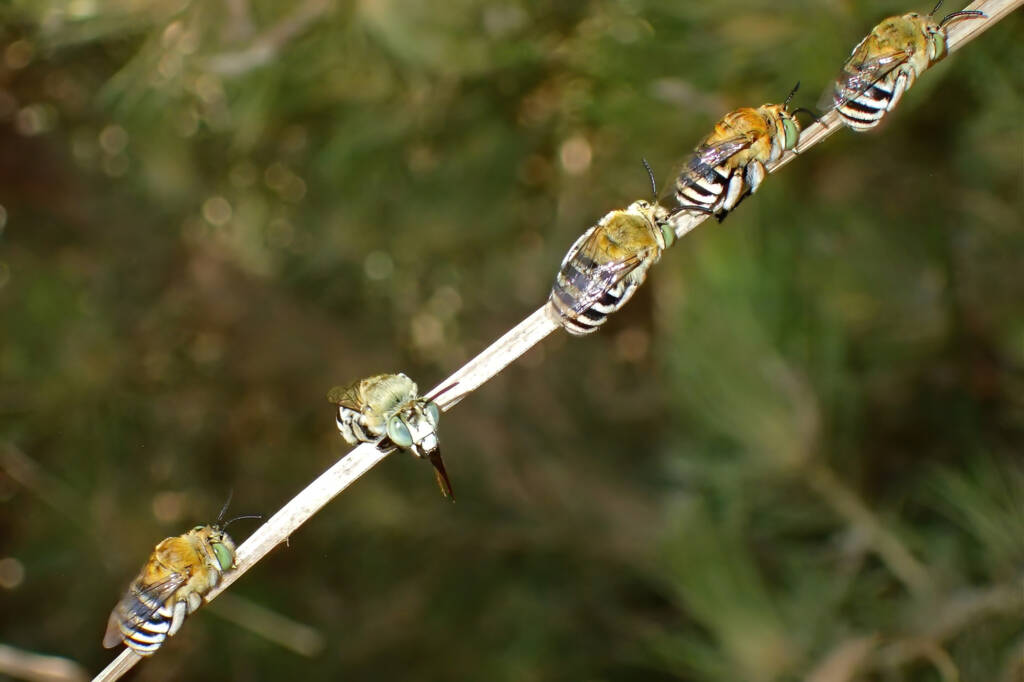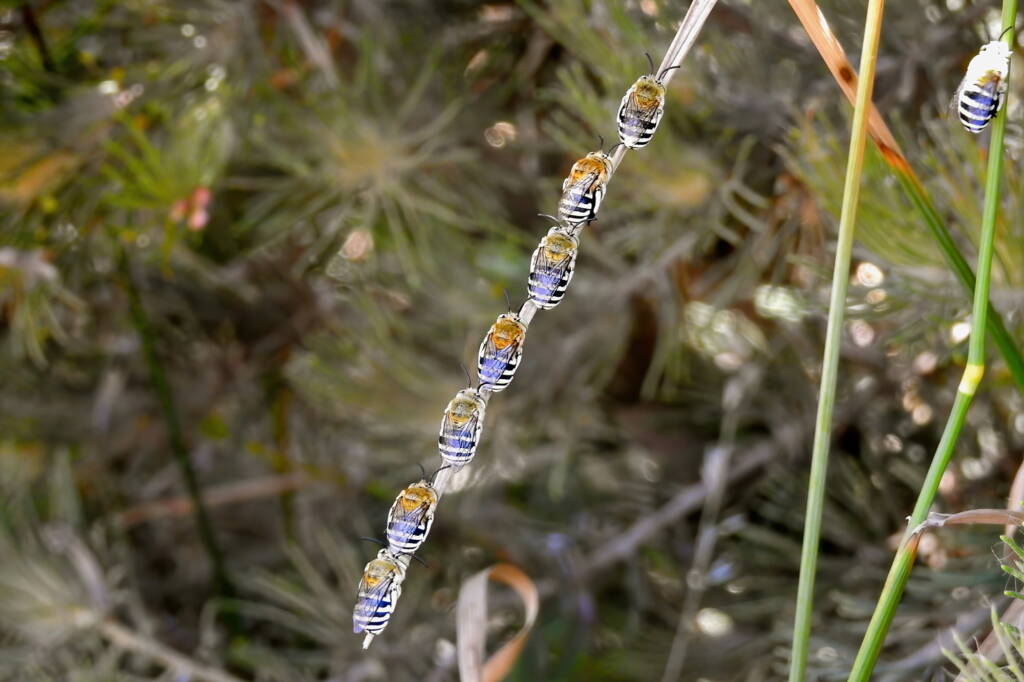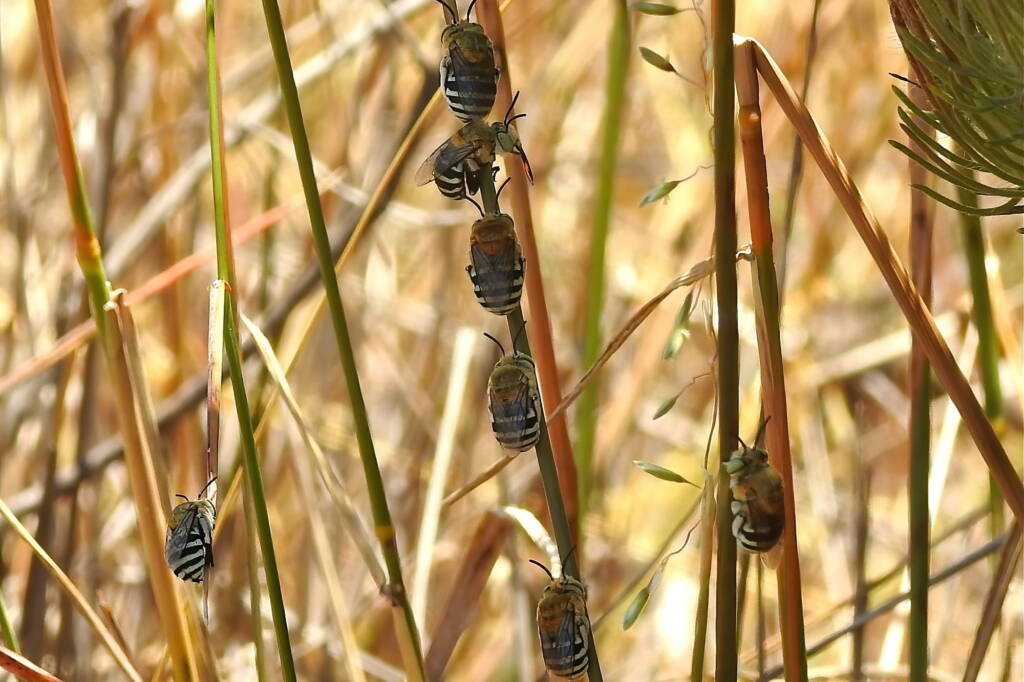Author Gary Taylor ◦
First pic, There’s always that one child that refuses to have their midday nap… 😄 I was doing my usual bush run out through midwest WA, had had a pretty successful morning, got some new bees for the albums and was still on gravel but on the home stretch when I went past a Woolly Bush (Adenanthos) that looked like it had Amegilla buzzing around all over it. Hmmm… I nearly kept driving, but the gut said spin around and go back for a look. So I did, parked right up alongside on the drivers side so I could see if it was worth getting out for a proper look 😄 Never seen so many Amegilla roosting in one spot before…

The second pic is actually the first pic I took when I pulled up, looking out of the window before I even got out.

Then when I got out I saw another bunch just to the left (third pic but it only shows the top half of the stem full of bees) and through the bush I could see two more grass stems lined with male Amegilla on the other side, not to mention all the ones that preferred their own spot… 🙂

I was asked, how do you distinguish males from females?
There’s a few ways… the unscientific method is firstly to see if it’s carrying pollen, only the females collect pollen. And for those bees that don’t collect pollen but ingest it, watch for feeding habits. The girls usually forage with their antennae down, checking out the quality of the food they’re collecting for their offspring, a bit like looking at the nutrition label on a jar of baby food… But the males are typical males, they feed with their antennae up, more interested in keeping an eye out for chicks than what they’re feeding on (and also watching out for other males they may have to fight off)…
Another way is to see if you can see the tip of the sting protruding (of the 2000 odd species of native bees in Australia only 11 are stingless), BUT only the females have stings.
With some some bees, like Hylaeus (the ones often called Masked bees), the facial markings are the best indicator with the males having much fuller face colouring. But scientifically, the two best ways (if you can see them) is the number of segments on the metasoma. Haha don’t panic, that’s just what would normally be called the abdomen in most insects, but with Hymenoptera (bees, wasps and ants), the first section of the abdomen is actually fused to the thorax so instead of “abdomen” it’s called metasoma, and the “thorax” is called a mesosoma 🙂.
The females have six upper segments (called “terga”) and the males have seven. The other way is by counting the number of segments in the antennae. Males have 13, females have twelve (with one exception, Euryglossina, sub genus Quasihesma, where it’s 12 and eleven, but the whole bee is only 2 mm long so good luck counting antennae segments on that one 😆).
Haha having said all that, fact is, generally if there’s a group of bees roosting together, they’re males… 😄👍
Check out the other blogs in this Woolly Bush series:
Under the Woolly Bush | Bubbling Amegilla | Sleeping Waroona cuckoo bee
Check out our Bee section for information about the Amegilla Bee.
